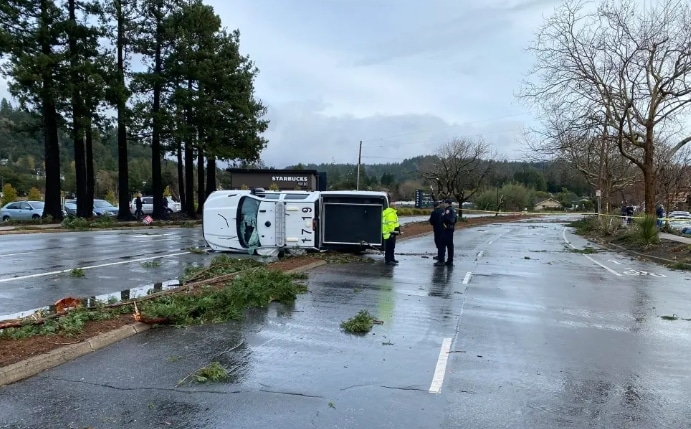Find an Expert Meteorologist Witness Here
Forensic Meteorology: The Science Behind Weather Investigations
Weather can be decisive in legal cases, influencing everything from personal injury claims to property damage disputes. Forensic meteorologists act as expert weather investigators, analyzing historical weather data to reconstruct atmospheric conditions at specific times and places. Their findings often play a critical role in courtrooms, supporting claims and establishing facts.
What is Forensic Meteorology?
Forensic meteorology applies atmospheric science to legal investigations. By combining meteorological expertise with investigative techniques, forensic meteorologists analyze past weather events to provide clear, objective insights for litigation.
Key Functions of Forensic Meteorologists
- Reconstructing past weather conditions using scientific data
- Interpreting how weather may have contributed to specific incidents
- Acting as expert witnesses in court proceedings
Why Forensic Meteorology Matters
Lawyers and investigators rely on forensic meteorologists to clarify the role of weather in cases like:
- Car accidents: Determining visibility, road conditions, or precipitation at the time of a crash.
- Insurance claims: Verifying damage caused by hail, floods, or high winds.
- Construction disputes: Assessing whether delays or damages were weather-related.
- Aviation accidents: Evaluating turbulence, storms, or icing conditions.
- Environmental cases: Examining how weather contributed to pollution spread or ecological damage.
Core Responsibilities of a Forensic Meteorologist
1. Data Collection and Analysis
Forensic meteorologists rely on diverse, reliable data sources to reconstruct weather events, including:
- Weather radar archives
- Satellite imagery
- Historical surface observations
- Eyewitness accounts
- Atmospheric models and upper air measurements
2. Using Advanced Tools
Forensic meteorologists leverage cutting-edge technology, such as:
- Weather modeling software: Simulates past atmospheric conditions.
- Geographic Information Systems (GIS): Maps weather impacts geographically.
- Radar interpretation systems: Analyzes storm movement and intensity.
- Historical weather databases: Tracks long-term weather patterns.
- Climate analysis tools: Assess seasonal and regional weather trends.
How to Become a Forensic Meteorologist
Forensic meteorology requires specialized education and training:
1. Educational Requirements
- A bachelor’s degree in meteorology or atmospheric science (minimum)
- Advanced degrees (master’s or Ph.D.) for expertise in weather analysis
2. Specialized Skills
- Proficiency in meteorological software and analysis tools
- Knowledge of legal processes and expert testimony requirements
3. Professional Certification
Recognized credentials from organizations like the American Meteorological Society (AMS).
Step-by-Step Investigation Process
Forensic meteorologists follow a rigorous process to ensure accuracy and reliability:
- Case Review: Analyze case details to identify weather-related factors.
- Data Collection: Retrieve historical weather records, radar imagery, and local observations.
- Analysis: Use data modeling and simulation tools to reconstruct weather events.
- Reporting:
- Create comprehensive reports explaining findings.
- Develop visual aids like maps or graphs for courtroom use.
- Expert Testimony: Communicate findings to judges, juries, or legal teams.
The Impact of Technology on Forensic Meteorology
Technological advancements are revolutionizing the field, making forensic analyses faster, more accurate, and more detailed:
- High-resolution satellite imagery: Provides detailed visual evidence.
- Improved radar systems: Captures precise storm data in real-time.
- AI-based analysis tools: Speeds up data interpretation.
- Computer simulations: Offers realistic weather reconstructions for courtrooms.
Legal Applications of Forensic Meteorology
1. Personal Injury Claims
Was poor weather a contributing factor in a slip-and-fall or car accident? Forensic meteorologists can verify weather conditions at the incident’s time and location.
2. Insurance Disputes
Insurance companies often dispute claims involving weather damage. Forensic meteorologists help validate whether hailstorms, wind, or floods caused the reported damage.
3. Construction Litigation
Weather delays or damages on construction sites are common. Forensic meteorologists assess whether extreme weather conditions were responsible.
4. Aviation Accidents
Forensic meteorologists provide critical insights into aviation incidents by analyzing turbulence, storm activity, and icing.
5. Environmental Cases
From pollution dispersal to natural disaster impacts, weather analysis is vital in environmental litigation.
Future Trends in Forensic Meteorology
As the field evolves, forensic meteorology continues to benefit from:
- Advanced weather models: More accurate predictions and reconstructions.
- Real-time data integration: Faster access to satellite and radar information.
- Enhanced courtroom visuals: Using virtual simulations to present findings persuasively.
Here are some helpful resources for a deeper dive into this growing field.

